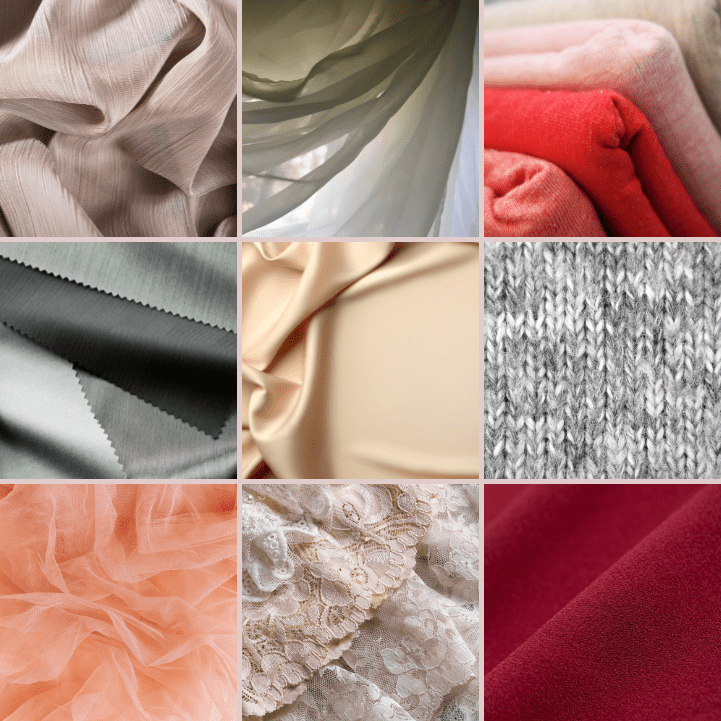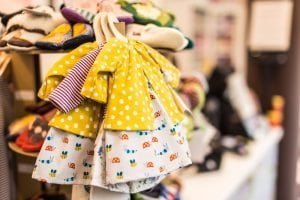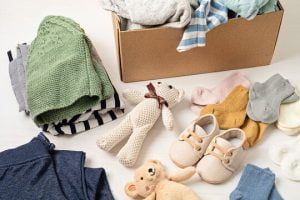In this guide, we will learn that Kids’ clothes are not just about fashion and style. They are also about comfort, durability, and safety. Kids have sensitive skin that can be easily irritated by harsh or synthetic fabrics. They also need clothes that can withstand their active and playful lifestyle. That’s why choosing the right fabrics and materials for kids’ clothes is very important.
But which one is the best fabric and material for kids’ clothes? How do you know which ones are soft, breathable, hypoallergenic, and easy to care for? In this article, we will introduce you to some of the most popular and suitable fabrics and materials for kids’ wear, along with their pros and cons.
1) Cotton
Cotton is one of the most common, versatile, and considered the best fabric for kids’ clothes. It is a natural fiber that is soft, lightweight, absorbent, and breathable. It can keep our kids cool in summer and warm in winter. It can also be dyed, printed, or embroidered with various patterns and colors.as you are aware, Pakistan is one of the biggest exporters of cotton to various countries in the world, but unfortunately, many of us Pakistani’s don’t rely on Pakistani products.
Cotton is also durable and easy to wash. It can resist stains, wrinkles, and pilling. It can also be blended with other fibers, such as spandex or polyester, to add stretch or strength.
However, cotton is not perfect. It can shrink or fade after repeated washing. It can also be prone to mildew or mold if not dried properly. Moreover, not all cotton is created equal. Some cotton is grown with pesticides, insecticides, or artificial fertilizers that can harm the environment or the health of the kids. Some cotton is also processed with chemical bleaches or dyes that can cause skin irritation or allergic reactions.
Therefore, when choosing cotton for kids’ clothes, it is better to look for organic cotton or cotton with the OEKO-TEX Standard 100 Class I certificate. These types of cotton are grown and processed without harmful chemicals or allergens. They are safe and gentle for kids’ skin and saliva.
2) Linen
Linen is another natural fiber that is great for kids’ clothes. It is made from the flax plant and has a crisp and textured feel. It is also lightweight, breathable, and moisture-wicking. It can keep kids cool and comfortable in hot weather.
Linen is also durable and eco-friendly. It can last for a long time and resist wear and tear. It can also biodegrade easily and does not require much water or energy to produce.
However, linen also has some drawbacks. It can wrinkle easily and require ironing. It can also shrink or stretch after washing. It can also be rough or scratchy on some kids’ skin.
Therefore, when choosing linen for kids’ clothes, it is better to look for linen that is pre-washed or softened. These types of linen are more smooth and gentle on the skin. They are also less likely to shrink or stretch.
3) Fleece
Fleece is a synthetic fabric that is made from polyester fibers. It is soft, fluffy, and warm. It can provide insulation and coziness for kids in cold weather.
Fleece is also easy to care for and durable. It can resist stains, wrinkles, and pilling. It can also be washed and dried quickly.
However, fleece also has some disadvantages. It can be too hot or stuffy for some kids in warm weather. It can also trap moisture and odors if not cleaned properly. Moreover, fleece can shed microplastics into the water system when washed. These micro plastics can pollute the environment and harm wildlife.
Therefore, when choosing fleece for kids’ clothes, it is better to look for fleece that is made from recycled polyester. These types of fleece are more eco-friendly and reduce the amount of plastic waste. Our entire product line of winter fleece are made of poly-fleece, which makes the fabric softer and more comfortable in cozy winter days.
4) Satin
Satin is a fabric that has a smooth and shiny surface. It is usually made from silk, but it can also be made from other fibers, such as polyester or rayon. It is often used for dresses, skirts, or blouses that have an elegant or fancy look.
Satin is also soft and comfortable on the skin. It can provide a silky feel and a luxurious appearance.
However, satin also has some limitations. It can be slippery or clingy on some kids’ body shapes. It can also snag or tear easily if caught on sharp objects or rough surfaces. Moreover, satin can be difficult to wash and maintain. It can require dry cleaning or hand washing. It can also fade or lose its shine after repeated washing.
Therefore, when choosing satin for kids’ clothes, it is better to look for satin that is made from natural fibers, such as silk. These types of satin are more breathable and durable than synthetic ones.
5) Wool
Wool is a natural fiber that comes from sheep or other animals. It is warm, soft, and cozy and consider as a best fabric. It can provide insulation and comfort for kids in winter.
Wool is also resilient and elastic. It can retain its shape and resist wrinkles. It can also absorb moisture and odors without feeling wet or smelly.
However, wool also has some challenges. It can be itchy or scratchy on some kids’ skin. It can also cause allergic reactions or rashes for some kids. Moreover, wool can be expensive and hard to wash. It can require special detergents or hand washing. It can also shrink or feel if washed in hot water or dried in high heat.
Therefore, when choosing wool for kids’ clothes, it is better to look for wool that is blended with other fibers, such as cotton or silk. These types of wool are more smooth and gentle on the skin. They are also less likely to shrink or feel.
How to choose the Best Fabric?
When purchasing new clothes for boys and girls, it’s important to consider the quality of the fabric. High-quality fabric is lightweight, breathable, and pure to the touch.
Conclusion
These are some of the best fabrics and materials for kids’ clothes. They have different characteristics and advantages that can suit different needs and preferences. However, they also have different drawbacks and challenges that need to be considered.
When choosing fabrics and materials for kids’ clothes, it is important to pay attention to the quality, safety, and comfort of the fabrics. It is also important to check the labels, certificates, and reviews of the fabrics. This way, you can make sure that you are buying the best fabric and material for your kids’ clothes.




